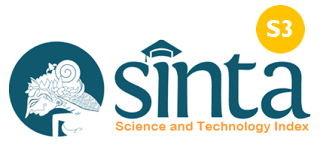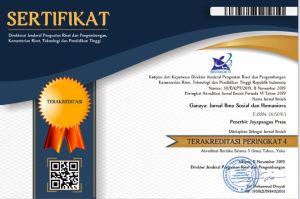Analisis Model Cooperative Integrated Reading Composition dalam Meningkatkan Pemahaman Membaca Siswa Kelas 5 SD
DOI:
https://doi.org/10.37329/cetta.v8i1.3832Keywords:
Cooperative Integrated Reading and Composition, Classroom Action Research, Reading ComprehensionAbstract
This research is motivated by the low reading comprehension ability of students at Madrasah Ibtidaiyah Al-Muhajirien Jakapermai, which is caused by less effective conventional learning methods. The purpose of this study is to improve the reading comprehension ability of grade V students through the application of the Cooperative Integrated Reading and Composition (CIRC) model. The method used in this study is classroom action research (PTK) which is carried out in three cycles, where each cycle consists of planning, action, observation, and reflection. Data was collected through observation, student worksheets (LKS), and reading comprehension tests. The results show that the application of the CIRC model significantly improves students' reading comprehension skills. In the first cycle, the average score of students' reading comprehension was 67.27, with 70% of students achieving a score above the Minimum Completeness Criteria (KKM). In the second cycle, the average score increased to 77.76, with 80% of students achieving scores above the KKM. In the third cycle, the average score reached 83.2, and 90% of students successfully met the KKM. In addition, observations showed increased student engagement and motivation during the learning process, where students were more active in participating in group discussions and reading activities, as well as showing higher self-confidence. The conclusion of this study is that the CIRC model has proven to be effective in improving students' reading comprehension skills. The application of this model not only improves learning outcomes, but also encourages activeness, collaboration, and communication between students. Students show a greater interest in reading and are better able to understand the reading material. Therefore, it is recommended that teachers apply the CIRC model as an alternative in learning to read in the classroom, in order to improve the quality of education and overall student learning outcomes.
References
Ariawan, V. A. N., Utami, N. T., & Rahman, R. (2018). Peningkatan Keterampilan Membaca Pemahaman Siswa Sekolah Dasar Melalui Implementasi Model CIRC Berbantuan Media Cetak. Al-Aulad: Journal of Islamic Primary Education, 1(2), 95-104.
Astutik, S., & Bektiarso, S. (2021). Pelatihan Penelitian Tindakan Kelas (PTK) Bagi Guru SMAN Panarukan Situbondo. Jurnal Inovasi Penelitian dan Pengabdian Masyarakat, 1(1), 54-62.
Beerwinkle, A. L., Owens, J., & Hudson, A. (2021). An Analysis of Comprehension Strategies and Skills Covered within Grade 3-5 Reading Textbooks in the United States. Technology, Knowledge and Learning, 26(2), 311-338.
Boliti, S. (2009). Peningkatan Kemampuan Membaca Pemahaman Siswa Kelas IV SDN 1 Lumbi-Lumbia Melalui Metode Latihan Terbimbing. Jurnal Kreatif Tadulako Online, 2(2), 12-23.
Bungsu, A. P., & Dafit, F. (2021). Pelaksanaan Literasi Membaca Di Sekolah Dasar. Jurnal Pedagogi Dan Pembelajaran, 4(3), 522-527.
Boston, M. A. & B. (1999). Exploring Collaborative Training with Educational Computer Assisted Simulations in Health Care Education: An Empirical Ecology of Resources Study. Creative Education, 3(06), 784.
Dewi, D. K., & Haryadi, H. (2022). Pengaruh Model CIRC terhadap Kemampuan Menulis Karangan Narasi Kelas IV SD. Journal of Elementary School (JOES), 5(2), 247-258.
Faizah, D. U., Sufyadi, S., Anggraini, L., Waluyo, W., Dewayani, S., Muldian, W., & Roosaria, R. (2016). Panduan Gerakan Literasi Sekolah Di Sekolah Dasar. Jakarta: Direktorat Pembinaan Sekolah Dasar Direktorat Jenderal Pendidikan Dasar dan Menengah Kementerian Pendidikan dan Kebudayaan.
Fauzi, M. R. (2020). Analisis Kemampuan Membaca Pemahman Siswa Sekolah Dasar Kelas Tinggi Dengan Menentukan Ide Pokok Paragraf Melalui Metode Concentrated Language Encounter. Journal Of Elementary Education, 3(4), 147-161.
Frans, S. A., Ani, Y., & Wijaya, Y. A. (2023). Kemampuan Membaca Pemahaman Siswa Sekolah Dasar [Reading Comprehension Skills of Elementary School Students]. Diligentia: Journal of Theology and Christian Education, 5(1), 54-68.
Gresheilla, R. S., Simpun, F., & Diplan, D. (2023). Upaya Meningkatkan Hasil Belajar Bahasa Indonesia Dengan Menggunakan Metode Cooperative Integrated Reading And Composition (CIRC) Pada Peserta Didik Kelas IV-A SDN 6 Menteng Tahun Pelajaran 2022/2023. Atmosfer: Jurnal Pendidikan, Bahasa, Sastra, Seni, Budaya, Dan Sosial Humaniora, 1(2), 137-149.
Halik, A. (2012). Penerapan Model Directed Inquiry Activity (DIA) dalam Meningkatkan Kemampuan Membaca Pemahaman Siswa Kelas V SDN 228 Labili-bili Pinrang. Pendidikan Guru Sekolah Dasar Fakultas Ilmu Pendidikan UNM, 11(1), 26-35.
Hs, H. A. B., Gading, I. K., & Bayu, G. W. (2020). Model Pembelajaran Cooperatif Integrated Reading Composition (CIRC) Meningkatkan Kemampuan Membaca Pemahaman Siswa. Jurnal Pedagogi Dan Pembelajaran, 3(2), 233-247.
Harianto, E. (2020). Keterampilan Membaca Dalam Pembelajaran Bahasa. Didaktika: Jurnal Kependidikan, 9(1), 1-8.
Harsiati, T. (2018). Karakteristik Soal Literasi Membaca Pada Program Pisa. Litera, 17(1), 90-106.
Hasriadi, H. (2022). Metode Pembelajaran Inovatif di Era Digitalisasi. Jurnal Sinestesia, 12(1), 136-151.
Indrastoeti, J., & Mahfud, H. (2015). Pembelajaran Kooperatif Dengan Pendekatan Experiental Learning Untuk Meningkatkan Keterampilan Sosial. Mimbar Sekolah Dasar, 2(2), 140-151.
Isfihananti, A. R. (2016). Kemampuan Membaca Pemahaman pada Pembelajaran Bahasa Indonesia Siswa Kelas IV SD Negeri Gugus Dieng Kecamatan Bulu Kabupaten Temanggung. Universitas Negeri Semarang, 64.
Johnson, D. W., & Johnson, R. T. (1987). Learning Together And Alone: Cooperative, Competitive, And Individualistic Learning. Prentice-Hall, Inc.
Karim, M. F., & Fathoni, A. (2022). Pembelajaran CIRC dalam Menumbuhkan Keterampilan Membaca Siswa Sekolah Dasar. Jurnal Basicedu, 6(4), 5910-5917.
Latifa, U. (2017). Perkembangan Pada Anak Sekolah Dasar: Masalah dan Perkembangannya. Academica: Journal of Multidisciplinary Studies, 1(2), 185-196.
Magdalena, R. (2017). Peningkatan Keterampilan Menulis Ringkasan Teks Bacaan Melalui Model Pembelajaran Teknik CIRC (Cooperative Integrated Reading Composition). Deiksis, 9(02), 194-203.
Muliawanti, S. F., Amalian, A. R., Nurasiah, I., Hayati, E., & Taslim, T. (2022). Analisis Kemampuan Membaca Pemahaman Siswa Kelas Iii Sekolah Dasar. Jurnal Cakrawala Pendas, 8(3), 860-869.
Maharani, B., & Wahidin, W. (2022). Analisis Kemampuan Literasi Peserta Didik Sekolah Dasar Dalam Menyelesaikan Soal Asesmen Kompetensi Minimum. Jurnal Basicedu, 6(4), 5656-5663.
Pohan, A. A., Abidin, Y., & Sastromiharjo, A. (2021). Model Pembelajaran RADEC dalam Pembelajaran Membaca Pemahaman Siswa. Seminar Internasional Riksa Bahasa XIV, 496, 250-258.
Pratiwi, Y. A., & Zahro, A. (2021). Penerapan Model Cooperative Integrated Reading and Composition (Circ) Untuk Meningkatan Hasil Belajar Menggali Teks Narasi Pada Siswa Kelas V Sdn Balerejo 01 Kebonsari. JISIP: (Jurnal Ilmu Sosial Dan Pendidikan), 5(4), 1092-1097.
Putri, A., Rambe, R. N., Nuraini, I., Lilis, L., Lubis, P. R., & Wirdayani, R. (2023). Upaya Peningkatan Keterampilan Membaca Di Kelas Tinggi. Jurnal Pendidikan Dan Sastra Inggris, 3(2), 51-62.
Rahmi, Y., & Marnola, I. (2020). Peningkatan Kemampuan Membaca Pemahaman Siswa Melalui Model Pembelajaran Cooperative Integrated Reading and Compotion (Circ). Jurnal Basicedu, 4(3), 662-672.
Saadati, B. A., & Sadli, M. (2019). Analisis Pengembangan Budaya Literasi Dalam Meningkatkan Minat Membaca Siswa Di Sekolah Dasar. TERAMPIL: Jurnal Pendidikan Dan Pembelajaran Dasar, 6(2), 151-164.
Safarati, N., & Zuhra, F. (2023). Literature Review: Pembelajaran Berdiferensiasi Di Sekolah Menengah. GENTA MULIA: Jurnal Ilmiah Pendidikan, 6(11), 33-37.
Safitri, R. A. N., Pratiwi, C. P., & HS, A. K. (2023). Penerapan Model Pembelajaran Tipe CIRC (Cooperative Integrated Reading Composition) Berbantuan Media Ajar Animasi Untuk Meningkatkan Keterampilan Membaca Siswa Kelas V SDN 02 Klegen. Prosiding Konferensi Ilmiah Dasar, 4, 1388-1398.
Slavin, R. E. (1995). Cooperative Learning Theory Research and Practise. Boston: Allyand and Bacon Publishers, 419.
Sridarmini, H., Mufarizuddin, M., & Ananda, R. (2023). Peningkatan Kemampuan Membaca Pemahaman Dengan Menggunakan Model Cooperative Integrated Reading and Composition (Circ ) Pada Siswa Sekolah Dasar. Jurnal Review Pendidikan Dasar: Jurnal Kajian Pendidikan Dan Hasil Penelitian, 9(1), 54-60.
Sugiyono, P. (2020). Metodologi Penelitian Kuantitatif Kualitatif Dan R&D. Bandung: Alfabeta.
Sulistyaningsih, D., Waluyo, S. B., & Kartono, K. (2012). Model Pembelajaran Kooperatif CIRC dengan Pendekatan KOnstruktivisme Untuk Meningkatkan Kemampuan Koneksi Matematik. Unnes Journal of Mathematics Education Research (UJMER), 1(2), 121-127.
Supriyadi, S. (2018). Penerapan Metode Cooperative Integrated Reading and Composition (Circ) Untuk Meningkatkan Kemampuan Siswa Dalam Berbicara Dengan Bahasa Inggris. Jurnal Litbang: Media Informasi Penelitian, Pengembangan Dan IPTEK, 14(2), 131-138.
Tarigan, H. G. (2018). Kemampuan Dalam Keterampilan Membaca Siswa Kelas Rendah.
Vygotsky, L. S. (1978). Mind In Society: The Development Of Higher Psychological Processes. Harvard university press.
Yasmin, F. (2018). Penerapan Model Pembelajaran Cooperative Integrated Reading and Composition (CIRC) Dalam Meningkatkan Hasil Belajar Membaca Pemahaman Siswa. Cokroaminoto Journal of Primary Education, 1(1), 52-57.
Zakaria, E., Solfitri, T., Daud, Y., & Abidin, Z. Z. (2013). Effect Of Cooperative Learning On Secondary School Students’ Mathematics Achievement. Creative education, 4(2), 98-100.
Downloads
Published
How to Cite
Issue
Section
License
Copyright (c) 2025 Nuryani Nuryani, Nidya Chandra Muji Utami, Nina Nurhasanah

This work is licensed under a Creative Commons Attribution-ShareAlike 4.0 International License.
An author who publishes in the Cetta : Jurnal Ilmu Pendidikan agrees to the following terms:
- Author retains the copyright and grants the journal the right of first publication of the work simultaneously licensed under the Creative Commons Attribution-ShareAlike 4.0 License that allows others to share the work with an acknowledgement of the work's authorship and initial publication in this journal
- Author is able to enter into separate, additional contractual arrangements for the non-exclusive distribution of the journal's published version of the work (e.g., post it to an institutional repository or publish it in a book) with the acknowledgement of its initial publication in this journal.
- Author is permitted and encouraged to post his/her work online (e.g., in institutional repositories or on their website) prior to and during the submission process, as it can lead to productive exchanges, as well as earlier and greater citation of the published work (See The Effect of Open Access).
Read more about the Creative Commons Attribution-ShareAlike 4.0 Licence here: https://creativecommons.org/licenses/by-sa/4.0/.





